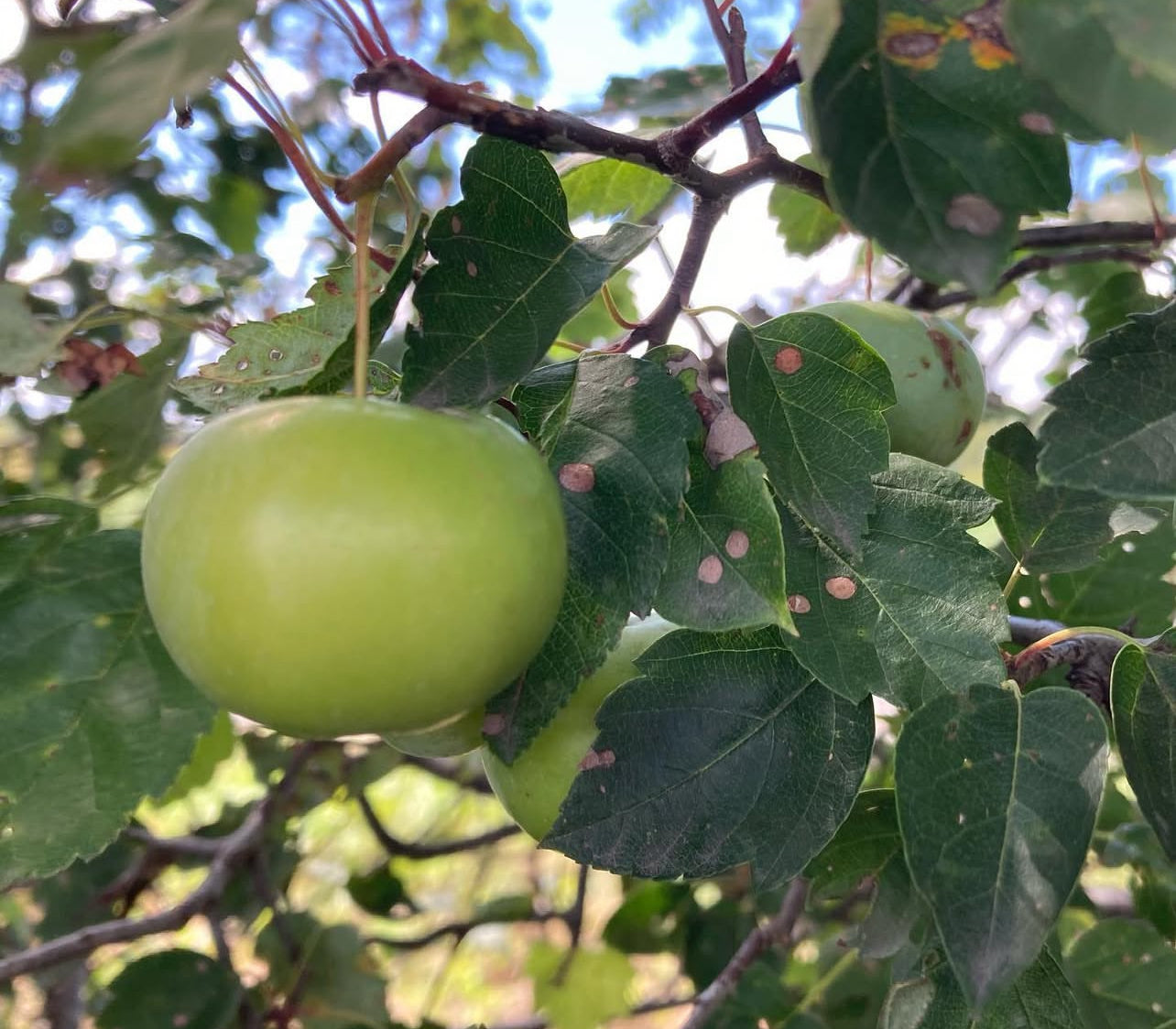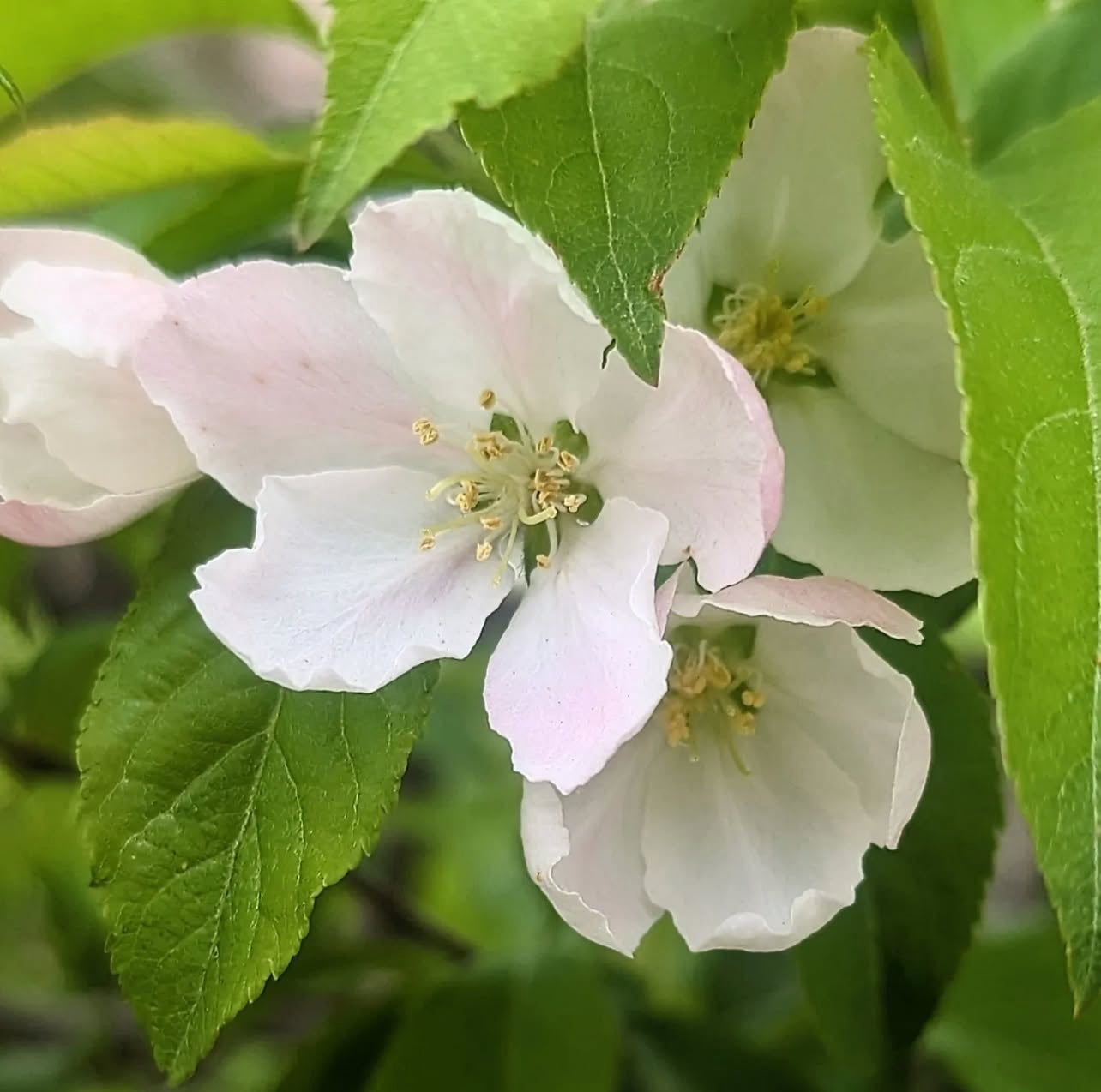Wild Crabapple (Malus coronaria)
Wild Crabapple (Malus coronaria)
Local Pickup Available in Harrop, BC
Couldn't load pickup availability
Why We Grow It
Why We Grow It
Sweet Crabapple is a valuable addition to food forests and ecological designs due to its hardiness and native plant appeal. It enhances biodiversity by supporting pollinators and wildlife, while its fruit provides a source of nutrition for humans and animals. Its hardiness and adaptability make it an excellent candidate for restoration projects, where it stabilizes soil and aids in reforestation.
How the Plant Grows
How the Plant Grows
Sweet Crabapple trees grow as small to medium-sized deciduous trees with a rounded or irregular crown. In spring, they burst into clusters of pinkish-white, fragrant flowers, which attract bees and other pollinators. Over summer, these give way to small, greenish-yellow apples that ripen in late summer or early fall. The trees are relatively fast-growing in their early years, developing a dense, spreading canopy and a deep root system.
Plant Size
Plant Size
Size at Maturity- Understory. Grows to 10-15 feet tall with a similar spread.
Current Size- Large 8"-18" 1 year old seedling
Additional Info
Additional Info
The Sweet Crabapple has been a part of North America’s indigenous edible landscape for a long time, valued for its tart fruit and beautiful blossoms. Historically used by native peoples for food and medicine, its small, tart apples can be made into jellies, ciders, and syrups. In agroforestry, this species plays a role in supporting pollinators, with its blossoms providing early-season nectar or as a good silvopasture candidate. The dense thickets formed by Malus coronaria also offer habitat and food for birds and small mammals. Its tolerance for poor soils and compact conditions makes it a popular choice for soil stabilization and edge plantings.
The Sweet Crabapple, a native species to Ontario and eastern North America, is a versatile and resilient small tree perfect for food forests, permaculture systems, and ecological restoration projects. Renowned for its fragrant blossoms and tart fruit, this species supports pollinators, wildlife, and homesteaders alike. Its adaptability to challenging soils and climates makes it an excellent choice for temperate cold regions.
Share


Plant Highlights
-

Water
Moderate; prefers consistent moisture but tolerates short periods of drought once established.
-

Pollination
Cross-pollination required for optimal fruit production; best planted with other apple or crabapple species
-

Soil
Thrives in well-drained loamy soils, tolerates clay and sandy soils with a slightly acidic to neutral pH.
-

Years to Bear
Produces fruit within 4-5 years after planting
-

Hardiness
Zone 3, tolerating temperatures as low as -40°C
-

Solar
Prefers full sun, tolerates partial shade with reduced flowering and fruiting.
Subscribe to our emails
Lots of Free Growing Info. Be the first to know about new plants and exclusive discounts.








